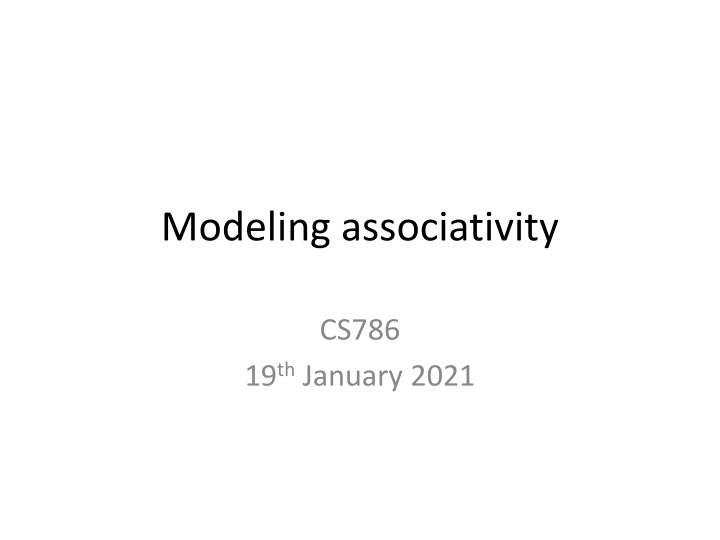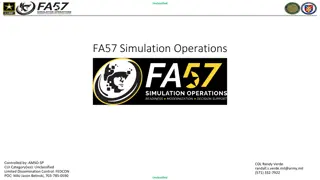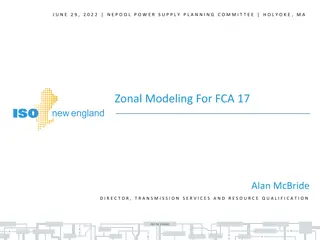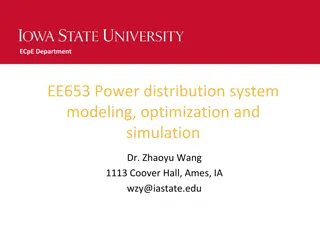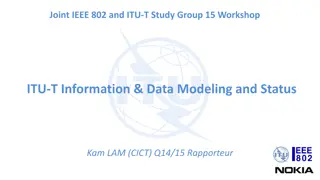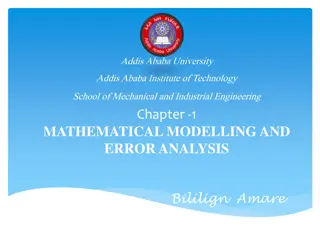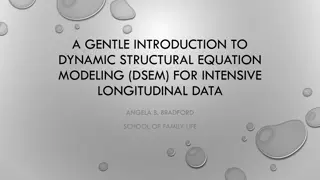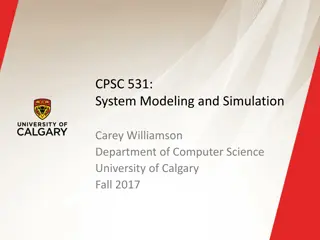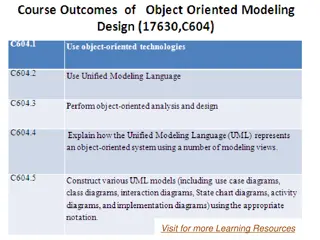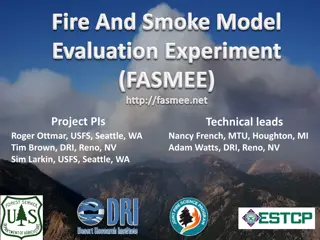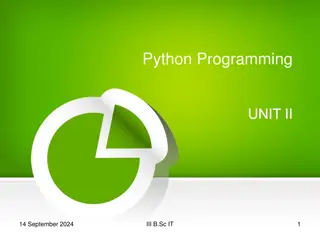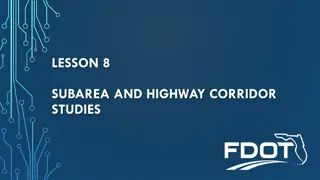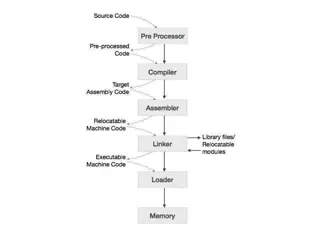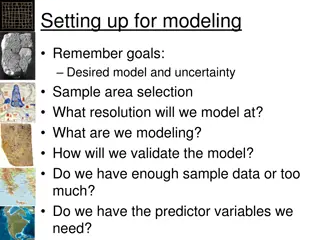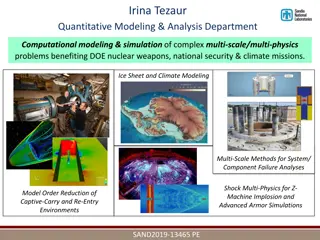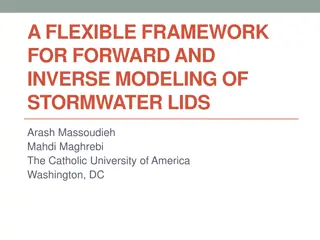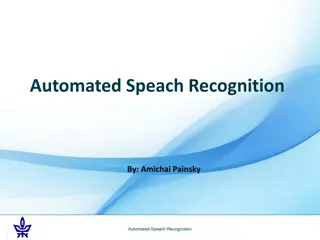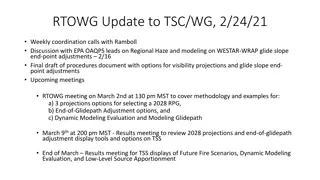Modeling associativity
In classical conditioning, drug users develop tolerance specific to certain environments, leading to associations that influence responses. Clinical therapies utilizing conditioning methods face challenges due to the strength of fear conditioning. The Rescorla-Wagner model has been instrumental in understanding classical conditioning phenomena and empirical observations. Explore latent cause modeling and implications for cognitive modeling. (467 characters)
Download Presentation

Please find below an Image/Link to download the presentation.
The content on the website is provided AS IS for your information and personal use only. It may not be sold, licensed, or shared on other websites without obtaining consent from the author.If you encounter any issues during the download, it is possible that the publisher has removed the file from their server.
You are allowed to download the files provided on this website for personal or commercial use, subject to the condition that they are used lawfully. All files are the property of their respective owners.
The content on the website is provided AS IS for your information and personal use only. It may not be sold, licensed, or shared on other websites without obtaining consent from the author.
E N D
Presentation Transcript
Modeling associativity CS786 19thJanuary 2021
Real-Life Examples of Classical Conditioning drug users become increasingly less responsive to the effects of the drug tolerance is specific to specific environments (e.g. bedroom) familiar environment becomes associated with a compensatory response (Physiology) taking drug in unfamiliar environment leads to lack of tolerance drug overdose
Clinical therapies People keep trying to use conditioning-based methods, e.g. flooding to treat phobias, fears and trauma-related disorders Doesn t work very well fear conditioning is much stronger than fear extinction For reasons that may become clearer as we go along Can you think why?
Modeling classical conditioning Most popular approach for years was the Rescorla-Wagner model Some versions replace Vtot with Vx; what is the difference? Could reproduce a number of empirical observations in classical conditioning experiments http://users.ipfw.edu/abbott/314/Rescorla2.htm
What it couldnt Pre-exposed Latent inhibition
Latent cause modeling of conditioning Latent cause model* Rescorla Wagner model s CS UCS CS UCS * See Courville, Daw & Touretzky (2005) for a formal description
Bayes 101 Bayes theorem is a simple consequence of conditional probability factoring = ( | ) ( ) ( | ) ( ) p A B p B p B A p A Lends itself easily to sequential updates ( | ) ( | ) p obs ( m | p ) m ( obs | = : 1 1 ( | ) t t p m obs m : 1 t ) p obs m p m obs : 1 1 t t Great fit for cognitive modeling Models interaction of already known with new data
Some RW failures explained by latent cause model Spontaneous recovery from extinction Facilitated reacquisition Conditioned inhibitor pairing Pre-exposure effect Higher order conditioning
Summary The mind learns by association Associates novel with known, based on a number of ways of relation Association of novel to known causes generalization Association of known with known causes reinforcement Important question: why is the mind associative?
Hebbian learning If two information processing units are activated simultaneously, their activity will become correlated, such that activity in one will make activity in the other more likely We will see How Hebbian learning works in artificial neurons How Hebbian learning works in real neurons
Hebbian learning j wij i
Hebbs rule in action Common variant Problem No way to weaken weights Weights can climb up without bound Solution: normalization?
Normalizing Hebbs rule Oja s rule can be derived as an approximate normalized version of Hebb s rule Other formulations are also possible, e.g. BCM, generalized Hebb Hebbian learning partially explains how neurons can encode new information And explains how this learning is fundamentally associative
Artificial neurons Logical abstraction of natural neurons to perform these functions
ANN Forward Propagation Bias Nodes Add one node to each layer that has constant output Forward propagation Calculate from input layer to output layer For each neuron: Calculate weighted average of input Calculate activation function
Neuron Model Firing Rules: Threshold rules: Calculate weighted average of input Fire if larger than threshold Perceptron rule Calculate weighted average of input input Output activation level is 1 1 2 1 ( = 0 ) 0 2 0
Neuron Model Firing Rules: Sigmoid functions: Hyperbolic tangent function 1 exp( ) ( ) = = tanh( ) 2 / + 1 exp( ) Logistic activation function ( ) + exp 1 1 = ( )
ANN Forward Propagation Apply input vector X to layer of neurons. Calculate where xi is the activation of previous layer neuron i wji is the weight of going from node i to node j p is the number of neurons in the previous layer Calculate output activation 1 = ( ) Y n j + 1 exp( ( )) V n j
ANN Forward Propagation Example: Three layer network Calculates xor of inputs -4.8 0 2 5.9 5.1 4 4.6 1 3 5.2 -5.2 -2.6 -2.7 -3.2 Bias
ANN Forward Propagation Input (0,0) -4.8 0 2 5.9 5.1 4 4.6 1 3 5.2 -5.2 -2.6 -2.7 -3.2 Bias
ANN Forward Propagation Input (0,0) Node 2 activation is (-4.8 0+4.6 0 - 2.6)= 0.0691 -4.8 0 2 5.9 5.1 4 4.6 1 3 5.2 -5.2 -2.6 -2.7 -3.2 Bias
ANN Forward Propagation Input (0,0) Node 3 activation is (5.1 0 - 5.2 0 - 3.2)= 0.0392 -4.8 0 2 5.9 5.1 4 4.6 1 3 5.2 -5.2 -2.6 -2.7 -3.2 Bias
ANN Forward Propagation Input (0,0) Node 4 activation is (5.9 0.069 + 5.2 0.069 2.7)= 0.110227 -4.8 0 2 5.9 5.1 4 4.6 1 3 5.2 -5.2 -2.6 -2.7 -3.2 Bias
ANN Forward Propagation Input (0,1) Node 2 activation is (4.6 -2.6)= 0.153269 -4.8 0 2 5.9 5.1 4 4.6 1 3 5.2 -5.2 -2.6 -2.7 -3.2 Bias
ANN Forward Propagation Input (0,1) Node 3 activation is (-5.2 -3.2)= 0.000224817 -4.8 0 2 5.9 5.1 4 4.6 1 3 5.2 -5.2 -2.6 -2.7 -3.2 Bias
ANN Forward Propagation Input (0,1) Node 4 activation is (5.9 0.153269 + 5.2 0.000224817 -2.7 )= 0.923992 -4.8 0 2 5.9 5.1 4 4.6 1 3 5.2 -5.2 -2.6 -2.7 -3.2 Bias
ANN Forward Propagation Network can learn a non-linearly separated set of outputs. Need to map output (real value) into binary values.
ANN Training Weights are determined by training Back-propagation: On given input, compare actual output to desired output. Adjust weights to output nodes. Work backwards through the various layers Start out with initial random weights Best to keep weights close to zero (<<10)
ANN Training Weights are determined by training Need a training set Should be representative of the problem During each training epoch: Submit training set element as input Calculate the error for the output neurons Calculate average error during epoch Adjust weights
ANN Training Error is the mean square of differences in output layer y observed output t target output
ANN Training Error of training epoch is the average of all errors.
ANN Training Update weights and thresholds using Weights Bias is a possibly time-dependent learning rate that should prevent overcorrection https://machinelearningmastery.com/implement-perceptron-algorithm-scratch-python/
What neurons do the ML version A neuron collects signals from dendrites (not quite) Sends out spikes of electrical activity through an axon, which splits into thousands of branches. At the end of each branch, a synapse converts activity into either exciting or inhibiting activity of a dendrite at another neuron (more complicated than this) Neuron fires when exciting activity surpasses inhibitory activity above some threshold (neurotransmitters govern the threshold and activity rate) Learning changes the strength of synapses (but what sort of learning?)
